Ski: 2021-2022 DPS Pagoda Tour 100 RP, 184 cm
Test Location: Crested Butte, Colorado
Days Skied: 11
Available Lengths: 153, 163, 171, 179, 184 cm
Blister’s Measured Tip-to-Tail Length (straight-tape pull): 182.5 cm
Stated Weight per Ski: 1550 grams
Blister’s Measured Weight per Ski: 1556 & 1559 grams
Stated Dimensions: 133-100-118 mm
Blister’s Measured Dimensions: 133.2-100.3-118.3 mm
Stated Sidecut Radius (all lengths): 15 meters
Measured Tip & Tail Splay (ski decambered): 77 mm / 19 mm
Measured Traditional Camber Underfoot: 4 mm
Core: paulownia/ash + “aerospace-grade foam” + carbon laminate
Base: sintered “World Cup race base”
Factory Recommended Mount Point: -12.45 cm from center; 78.8 cm from tail
Boots / Bindings: Fischer TransAlp Pro, Atomic Hawx Prime XTD 130, Tecnica Zero G Tour Pro / Marker Alpinist

Intro
DPS has been making lightweight touring skis basically since the brand was founded, and their current “Pagoda Tour” series is their latest offering for those who like to get to the top of their descents under their own power.
Within the Pagoda Tour collection, the Pagoda Tour 100 RP is intended to be a versatile all-rounder — from unpredictable early season snow to deep mid-winter days and long spring tours, it’s designed to handle it all.
We’ve now used it for all of that, so it’s time to weigh in on where the Pagoda Tour 100 RP slots into the current crop of touring skis and who we think would appreciate this ski the most.
What DPS says about the Pagoda Tour 100 RP
“With its unique rocker profile, the playful and floaty 100 RP is now available in a tour-specific offering, specifically optimized for the full range of backcountry conditions you might encounter.”
Pretty standard stuff for a ~100mm-wide touring ski. As for that tour-specific construction…
Construction
As of the 21/22 season, DPS now has three different “Pagoda” constructions: Pagoda, Pagoda Piste, and Pagoda Tour. The name comes from an Asian architectural style with the notable characteristic of multiple tiers, and is reflected in the ski cores via horizontally laminated layers (the vast majority of ski wood cores have vertically laminated stringers).
In the Pagoda Tour construction, this consists of a mix of paulownia, ash, and “aerospace-grade foam” on the bottom layer, and then a layer of paulownia over the top. As we’ve come to expect from DPS, that core is then wrapped up in a pre-preg carbon fiber laminate.
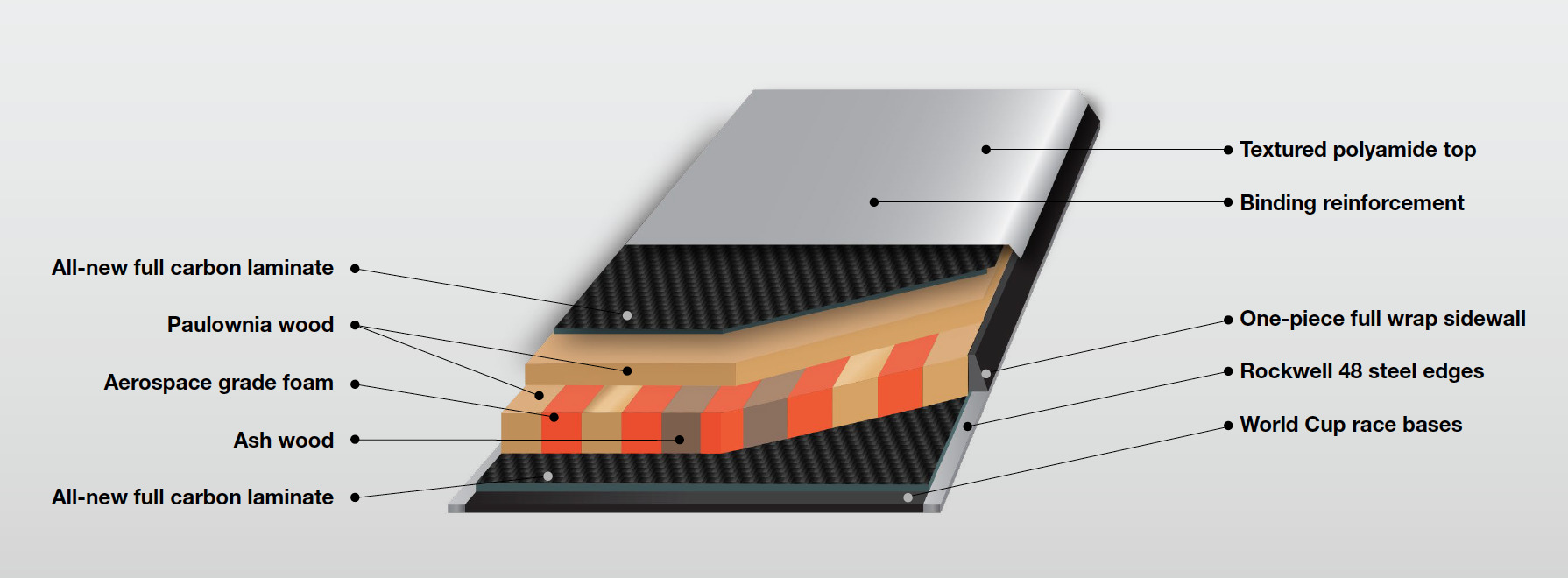
The result, according to DPS, is “a distinct combination of power, energy, and dampness that rivals front-side oriented skis at classic touring weights.”
That’s a bold claim, but below we’ll get into how the Pagoda Tour construction feels on snow.
Shape / Rocker Profile
The 100 RP design is available in several of DPS’s constructions, and it stands out from other ~100mm-wide skis due to its dramatically tapered tips and significantly rockered profile. The “RP” designation stands for “resort powder,” and was derived from the famous DPS Wailer 112 design.
Compared to skis like the K2 Wayback 96, WNDR Alpine Vital 100, and Line Vision 98, the DPS Pagoda Tour 100 RP shape stands out because of its tapered tips and tails (and correspondingly shorter effective edge). The Pagoda Tour 100 RP also has a deeper tip rocker line and more tip splay than most similarly wide skis, though its tail rocker and tail splay aren’t quite as radical.
Flex Pattern
Here’s how we’d characterize the flex pattern of the Pagoda Tour 100 RP:
Tips: 7
Shovels: 7-7.5
In Front of Toe Piece: 8-9.5
Underfoot: 10
Behind the Heel Piece: 9.5-8.5
Tails: 8.5-9
Many of the recent DPS skis we’ve reviewed have been very stiff, but I was glad to see that the Pagoda Tour 100 RP didn’t flex like a 2×4. As we’ve discussed many times, the combination of light + stiff doesn’t tend to produce skis with nice ride qualities.
Overall, the Pagoda Tour 100 RP is still a pretty strong ski. But its tips and shovels are far from unbendable (particularly compared to many of the previous DPS Alchemist skis). There’s a smooth transition from the softer tips to the stiffer midsection, and then the Pagoda Tour 100 RP softens up a bit as you move from the middle to the tails.
Sidecut Radius
Similar to the other “RP” skis in the DPS line, the Pagoda Tour 100 RP has a pretty short stated sidecut radius of 15 meters for all lengths. That’s shorter than many skis in its class, but as we’ll get into below, I wouldn’t immediately write off this ski purely based on this one number.
Mount Point
The Pagoda Tour 100 RP’s recommended mount point is about -12.5 cm from the true center of the ski, which is very far back by today’s standards and is in keeping with many of the DPS models (apart from their Koala series).
Weight
Some of the older DPS touring constructions resulted in extremely lightweight skis. The Pagoda Tour 100 RP is still a very lightweight ski for its size, but with the Pagoda Tour construction, it seems like DPS opted to get a bit more downhill performance in exchange for just a bit more weight.
At a little under 1560 grams per ski for the 184 cm length we have, the Pagoda Tour 100 RP is as light or lighter than most skis in its class. But as we’re about to get into, we think the Pagoda Tour construction does a whole lot with a pretty minimal amount of weight when it comes to downhill performance.
For reference, here are a number of our measured weights (per ski in grams) for some notable skis. Keep in mind the length differences to try to keep things apples-to-apples.
1337 & 1347 Movement Alp Tracks 106, 185 cm (20/21–21/22)
1362 & 1376 Scott Superguide 95, 178 cm (20/21–21/22)
1446 & 1447 Line Vision 98, 179 cm (19/20–21/22)
1469 & 1477 K2 Wayback 96, 177 cm (18/19–21/22)
1476 & 1490 K2 Wayback 106, 179 cm (18/19–21/22)
1477 & 1481 Majesty Superwolf, 178 cm (20/21–21/22)
1489 & 1545 G3 FINDr 102, 179 cm (19/20–21/22)
1543 & 1565 Salomon MTN Explore 95, 184 cm (16/17–21/22)
1556 & 1559 DPS Pagoda Tour 100 RP, 184 cm (20/21–21/22)
1577 & 1605 Scott Superguide Freetour, 185 cm (20/21–21/22)
1605 & 1630 Line Vision 108, 183 cm (19/20–21/22)
1606 & 1641 Blizzard Zero G 105, 188 cm (19/20–21/22)
1632 & 1637 Armada Tracer 98, 180 cm (19/20–21/22)
1637 & 1647 Ronin 108, 185 cm
1642 & 1651 Renoun Citadel 106, 185 cm (19/20–21/22)
1671 & 1675 Weston Summit, 186 cm (20/21–21/22)
1705 & 1708 Wagner Summit 105, 185 cm (21/22)
1725 & 1774 Faction Agent 3.0, 180 cm (20/21–21/22)
1736 & 1767 4FRNT Raven, 184 cm (16/17–21/22)
1787 & 1793 Fauna Pioneer, 184 cm
1800 & 1804 Head Kore 105, 184 cm (21/22)
1800 & 1824 ROMP Zorro 100, 183 cm
1807 & 1840 Atomic Bent Chetler 100, 188 cm (18/19–21/22)
1818 & 1823 Folsom Cash 106 Carbon, 184 cm (19/20–21/22)
1839 & 1840 WNDR Alpine Vital 100, cambered, 183 cm (20/21–21/22)
1848 & 1903 Line Sick Day 104, 186 cm (17/18–21/22)
1936 & 1963 DPS Pagoda 100 RP, 184 cm (21/22)
Alright, now onto how this ski actually performs in the backcountry:
FULL REVIEW
Dylan Wood and I ended up using the 184 cm Pagoda Tour 100 RP for a bit of everything. We took it out for some cold mid-winter tree skiing, used it for several longer spring tours, and then we recently got back on it as soon as there was enough snow in Crested Butte to link some turns together. Here’s how it’s handled all of that:
Powder
Luke Koppa (5’8”, 155 lbs / 173 cm, 70 kg): For a ski that’s “only” 100 mm underfoot, the Pagoda Tour 100 RP does really, really well in fresh snow.
While they might look odd when you first see them, the Pagoda Tour 100 RP’s dramatically rockered and tapered tips and very rearward mount point equate to excellent flotation for a ~100mm-wide ski. If my backcountry days frequently involved more than a foot (~30 cm) of fresh snow, I’d opt for something wider. But similar to the heavier Pagoda 100 RP, the Pagoda Tour 100 RP does an excellent job of planing up in deep snow for not being some super fat ski.
And beyond pure flotation, the Pagoda Tour 100 RP’s significantly tapered and rockered design also makes it pretty maneuverable in deeper conditions. Even if you’re not driving its shovels super hard, the Pagoda Tour 100 RP’s tail is pretty easy to release and the ski is generally happy to make quick turns, whether they’re more slarved / pivoted or carved on edge.
This ski wouldn’t be my top pick if my backcountry days involved a lot of big, open faces and I wanted to make drawn-out, high-speed arcs down them. But, frankly, that’s not what my mid-winter days consist of, and for the more realistic tight tree skiing I do when it has snowed, the Pagoda Tour 100 RP is pretty awesome for a ski of this width. It makes skiing mellow-angle, pow-filled trees both easy and enjoyable, and that’s mostly what I want when I’m trying to find some fresh snow in Colorado’s unpredictable snowpack.
Dylan Wood (5’11”, 155 lbs / 180 cm, 70 kg): I was also impressed by how well the DPS Pagoda Tour 100 RP handled fresh snow. In unconsolidated, sometimes faceted, early season powder around 2 feet (~61 cm) deep, the Pagoda Tour 100 RP floated surprisingly well for its width and felt quite comfortable in these conditions. On this ski, it was easy to make short, slower turns down mellower-angle slopes, and it also handled faster, bigger turns down 30-40º slopes quite well, too. Overall, I was really impressed by its versatility in powder.
Its very rearward mount point and generous tip rocker also helped keep those tips above the snow surface. I found I could drive the Pagoda Tour 100 RP with a pretty forward, directional stance in deep snow without the tips sinking on me. The Pagoda Tour 100 RP didn’t require a forward stance in powder, though; it was easy to slash around from a more centered stance as well.
Spring Corn
Luke: For me, corn is right up there with untouched pow in terms of fun factor. And same as the previous section, the Pagoda Tour 100 RP is a whole bunch of fun on soft spring snow.
As I touched on above, the Pagoda Tour 100 RP is happy to either slide or carve turns, and I found that particularly nice in the spring. When I knew the snow was going to stay consistent and I had plenty of open terrain, I could lay down hard, high-edge-angle carves on this ski. But when I hit tree line and the best line down to the trailhead wasn’t as clear, I could easily throw in a last-minute slarve to shed speed or change direction.
Again, you’ve got better options if you primarily like to make big turns. It’s not that the Pagoda Tour 100 RP is scary when you want to let it run, it’s just that I think this ski will be enjoyed the most by skiers who aren’t looking to get down their runs with as few rights and lefts as possible. If I had to put it into piste turns, I’d say the Pagoda Tour 100 RP is totally comfortable making GS-size turns in decent conditions, but if you really try to straight line, its tips can start to feel a bit twitchy.
Dylan: I never skied the Pagoda Tour 100 RP in spring corn, so I’ll trust Luke on this one.
Crusts
Luke: I have a hard time in crusty conditions no matter what ski I’m on. But compared to other ~100mm-wide, lightweight touring skis, I’d say the Pagoda Tour 100 RP is one of the easier ones when it comes to these sort of weird, unpredictable conditions.
The last thing I want in crusty snow is a ski that feels “hooky” — like you can’t break it free from a turn and you’re just along for the ride. And I would definitely not call the Pagoda Tour 100 RP “hooky,” despite it having a tight sidecut radius (which can often result in a hooky feeling).
And same as the other “RP” DPS skis I’ve tried, I think this comes down to the Pagoda Tour 100 RP’s shape and rocker profile. While you can utilize its tight sidecut radius on firmer / shallower conditions, that doesn’t really come into play in more “3D” snow, and you can instead slash and pivot the Pagoda Tour 100 RP through most snow conditions.
Something with more rocker and a longer sidecut radius (e.g., 4FRNT Raven) is a bit easier to slip and slide through grabby conditions, but overall, I’d say the Pagoda Tour 100 RP is one of the easier ~100mm-wide touring skis I’ve used in these otherwise not-easy conditions.
Dylan: Yep, crusts are never fun (unless we’re talking about pie crusts…). I did find the Pagoda Tour 100 RP to be pretty easy to manage through the sun crusts that I encountered on it this early winter.
As Luke mentioned, it isn’t as easy to slide through tricky snow as a ski like the 4FRNT Raven is, but instead, I found myself utilizing its low swing weight and relatively short, tapered tail to sort of “hack” my way through crusts, making plenty of jump turns rather than trying to slip and slide my way through them. With this method, I was able to make it through tricky crusts on the Pagoda Tour 100 RP with minimal drama.
Firm, Smooth Conditions
Luke: So we’ve now talked a lot about snow conditions that are on the more forgiving side of the spectrum, but how does the Pagoda Tour 100 RP perform when it hasn’t snowed in weeks?
Honestly, pretty well — especially given how well it handles deeper / softer snow.
Now, I’d opt for less rockered skis like the Salomon MTN Explore 95 or K2 Wayback 96 if my top priority was edge hold on super firm / icy conditions. But still, the Pagoda Tour 100 RP has been predictable and, again, easy on firm, consistent snow.
On more moderate-angle slopes where I actually feel comfortable carving it, the Pagoda Tour 100 RP holds an edge better than I would expect (similar to my experience with the DPS Pagoda Piste 90 RP). It doesn’t pull you into a turn like a carving ski nor does it finish a turn very powerfully, but it’s very predictable and I had lots of fun carving it on Mt. Crested Butte’s groomers after the resort had closed for the season.
When things get technical, steep, and firm, the Pagoda Tour 100 RP has also proved to be a reliable tool. Many <100mm-wide touring skis are not all that forgiving or easy to pivot down steep couloirs, which typically means my first hop turn of the day requires that I give myself an internal pump-up speech. On the Pagoda Tour 100 RP, it’s much less of a dramatic experience, thanks to its non-hooky tips and tails.
That said, if I was faced with hop-turning down a super steep line that was covered in legit ice, I think I’d trade the maneuverability of the Pagoda Tour 100 RP for the more solid edge hold of something with a less rockered and tapered design, like the Majesty Superwolf or Salomon MTN Explore 95. With the Pagoda Tour 100 RP, you’re just working with a shorter platform, and while I have yet to have it give out on me on firm snow, you’ll probably be better off with something with less rocker and taper if you’re frequently chasing icy steep lines.
Dylan: I also never got to ski the Pagoda Tour 100 RP in firm, smooth conditions as Luke has described. In my opinion, its low weight and tight radius would make it a pretty fun and practical ski for the occasional early morning or (more likely for me) late evening lap on Mt. Crested Butte while the lifts are not running. I’ll find that out for sure this winter.
Chop, Crud, & Variable Conditions
Luke: For how light it is, I think the Pagoda Tour 100 RP performs admirably in rougher, more inconsistent conditions. I was a bit worried that this lightweight ski would feel like skiing a tin can when I ran into someone else’s tracks or some refrozen snow, but I think DPS has done a very good job of making the most of their grams with the Pagoda Tour construction.
Heavier skis like the WNDR Alpine Vital 100 and Folsom Cash 106 Carbon still do a better job of muting out harsh snow and not getting knocked around as much at high speeds. But despite my initial suspicion, I never thought the Pagoda 100 RP felt particularly harsh on firm, rough snow, and its tight sidecut radius and tapered tips didn’t prove to be nearly as much of a liability at high speeds as I suspected.
Would I pick it for skiing the resort? Definitely not. Would I pick it if I wanted to make big turns down big backcountry faces? Nope. But especially for its weight and how easy it is in good / easy conditions and terrain, the Pagoda Tour 100 RP performs surprisingly well when the conditions you’re skiing aren’t as accommodating. Given its design, I kind of expected that I’d need to change up my skiing style on the Pagoda Tour 100 RP, but I pretty much just got on it and skied as I normally would (while also having more fun at more moderate speeds / terrain than I would on many other skis).
I think skis like the Blizzard Zero G 105 and Scott Superguide Freetour are better choices if you want a ski around 1500-1600 g and high-speed stability is a priority. But those skis also require more effort and better technique at slower speeds and in technical terrain, so it’s all about what tradeoffs you want to make.
Dylan: I skied the DPS Pagoda Tour 100 RP in resort-like chop and crud conditions with Drew and Luke the other day. While I wasn’t blown away by how the ski handled it, I certainly wasn’t let down by any means. Upon toning down my speed, the ski was pretty manageable in choppy, rough snow.
If overall downhill performance were a priority, I would definitely take a ski closer to the 2000-gram mark over the Pagoda Tour 100 RP, particularly if the backcountry terrain that I skied often had chopped-up, tracked-out, and set-up snow. Given that most of the backcountry skiing I do is chasing good, untouched snow, the Pagoda Tour 100 RP’s low weight and solid performance in powder is worth the stability that is lost when skiing the tracked-up outruns of popular backcountry areas.
The snow doesn’t have to be totally untracked to enjoy this ski, though; I found myself still having a good time on it on runs where I was commonly crossing other tracks that were put there that day. It’s when the snow has had time to set up and harden that the Pagoda Tour 100 RP starts to feel like it isn’t the best tool for the job.
Who’s It For?
Luke: I think the Pagoda Tour 100 RP could be a great 1-touring-ski-quiver for a lot of skiers — particularly those who aren’t frequently seeking big lines and high speeds in the backcountry.
For a place like Colorado, where sketchy avalanche conditions mean we’re often limited to moderate-angle slopes and tight trees, the Pagoda Tour 100 RP makes mellow terrain more interesting. At the same time, it’s still capable of arcing fairly fast turns in the spring when you can ski more open terrain.
For its weight, I think the suspension of the Pagoda Tour 100 RP is quite good. Still, if you don’t mind a heavier setup and downhill performance is your priority, you’ll be better served by heavier alternatives (see the Backcountry Touring & 50/50 sections in our Winter Buyer’s Guide).
Dylan: Luke pretty much nailed it. Skiers who prioritize versatility, a lower weight, and a nice balance of performance in both soft and firm snow ought to consider the DPS Pagoda Tour 100 RP as a dedicated touring ski.
If backcountry skiing is your way of finding better snow conditions than what the resort has to offer, the Pagoda Tour 100 RP makes a lot of sense. If you wander out-of-bounds to find big, fast lines or you don’t let variable and rough snow conditions stop you, a heavier ski makes more sense.
Bottom Line
Luke: Realistically, most backcountry skiers aren’t hitting ski-movie lines when they go out for a tour. Rather, a lot of us go touring to safely access some soft snow, and often that means skiing fairly mellow terrain. The DPS Pagoda Tour 100 RP is a ski that makes that sort of backcountry skiing a lot of fun, while not being scary when you do feel like ramping up your speed a bit or you run into some more challenging conditions.
Those who place a premium on high-speed composure and suspension have better options (most of which are heavier). But with the Pagoda Tour 100 RP, I think DPS has done a good job of making a touring ski that would make a lot of backcountry skiers happy a lot of the time.
Dylan: Absolutely. I think the DPS Pagoda Tour 100 RP is a compelling choice for a lot of backcountry skiers who mostly seek out soft snow on mellower slopes, but also occasionally like to open things up on steeper faces and sometimes encounter variable conditions.
Deep Dive Comparisons
Become a Blister Member or Deep Dive subscriber to check out our Deep Dive comparisons of the Pagoda Tour 100 RP to see how it compares to the DPS Pagoda 100 RP, Line Vision 98, Salomon MTN Explore 95, Movement Alp Tracks 106, 4FRNT Raven, Fauna Pioneer, Blizzard Zero G 105, Scott Superguide Freetour, K2 Wayback 96, K2 Wayback 106, Nordica Enforcer Unlimited 104, Weston Summit, Armada Tracer 98, WNDR Alpine Vital 100, G3 FINDr 102, Wagner Summit 105, & Renoun Citadel 106.

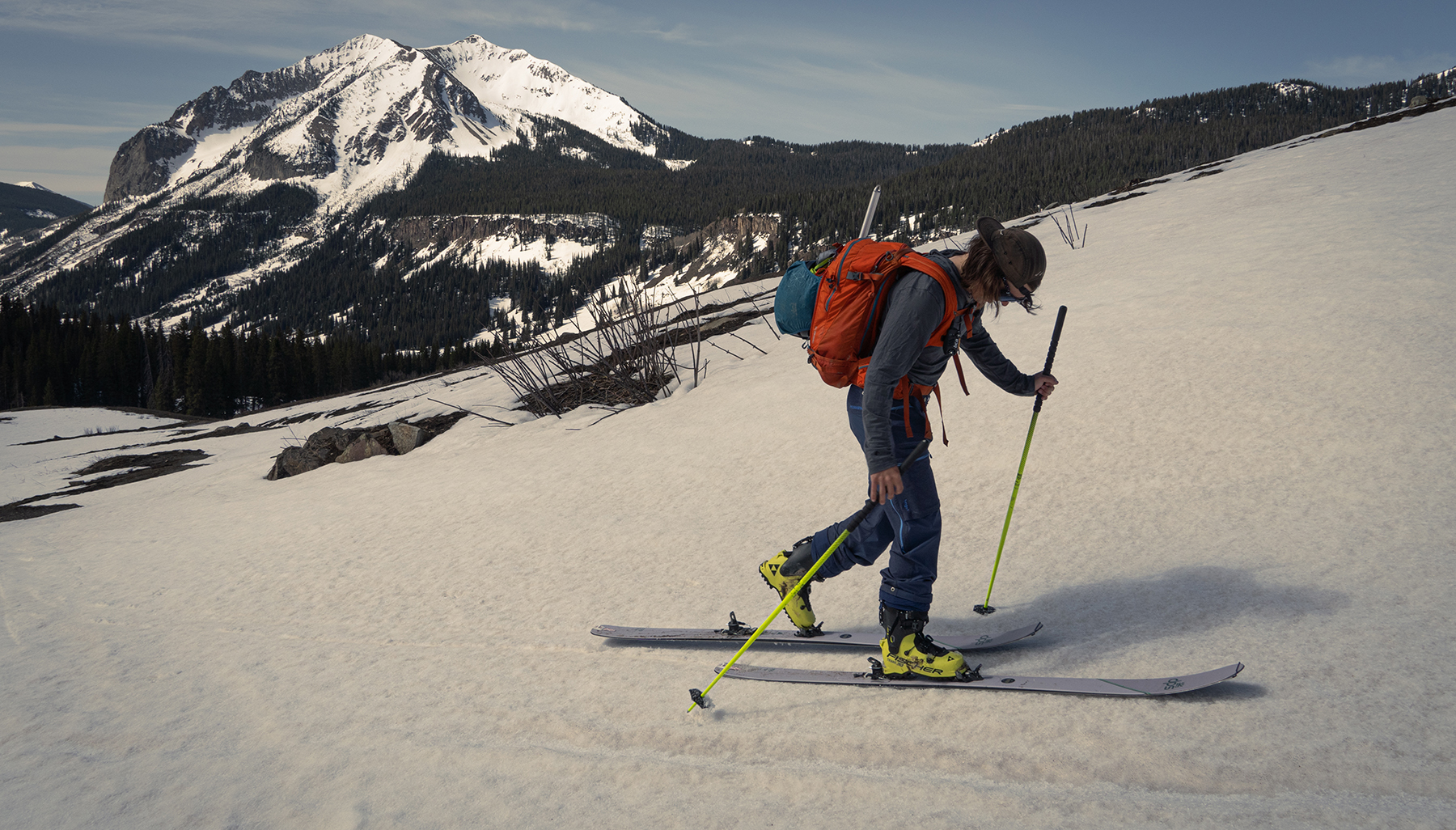


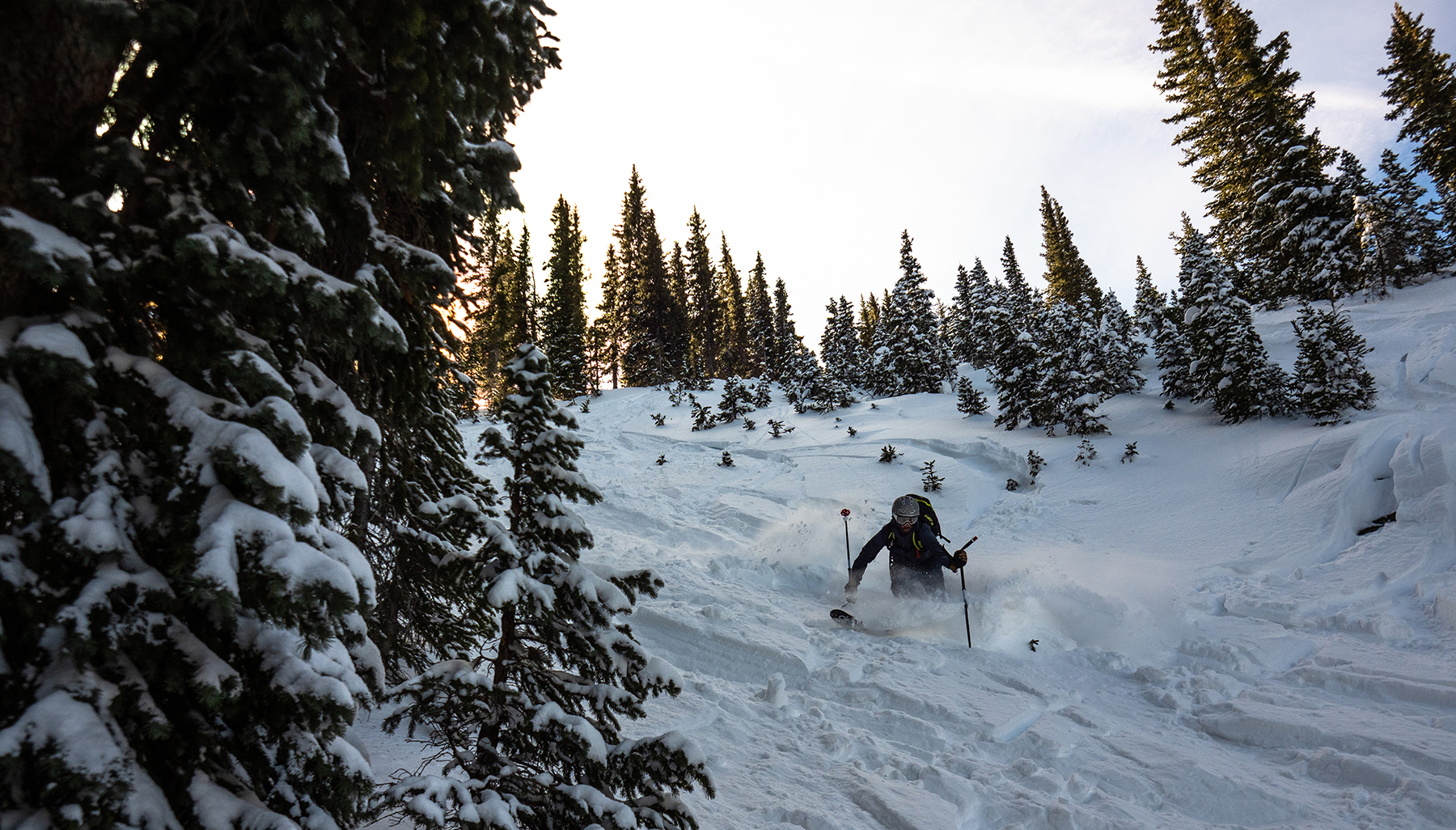
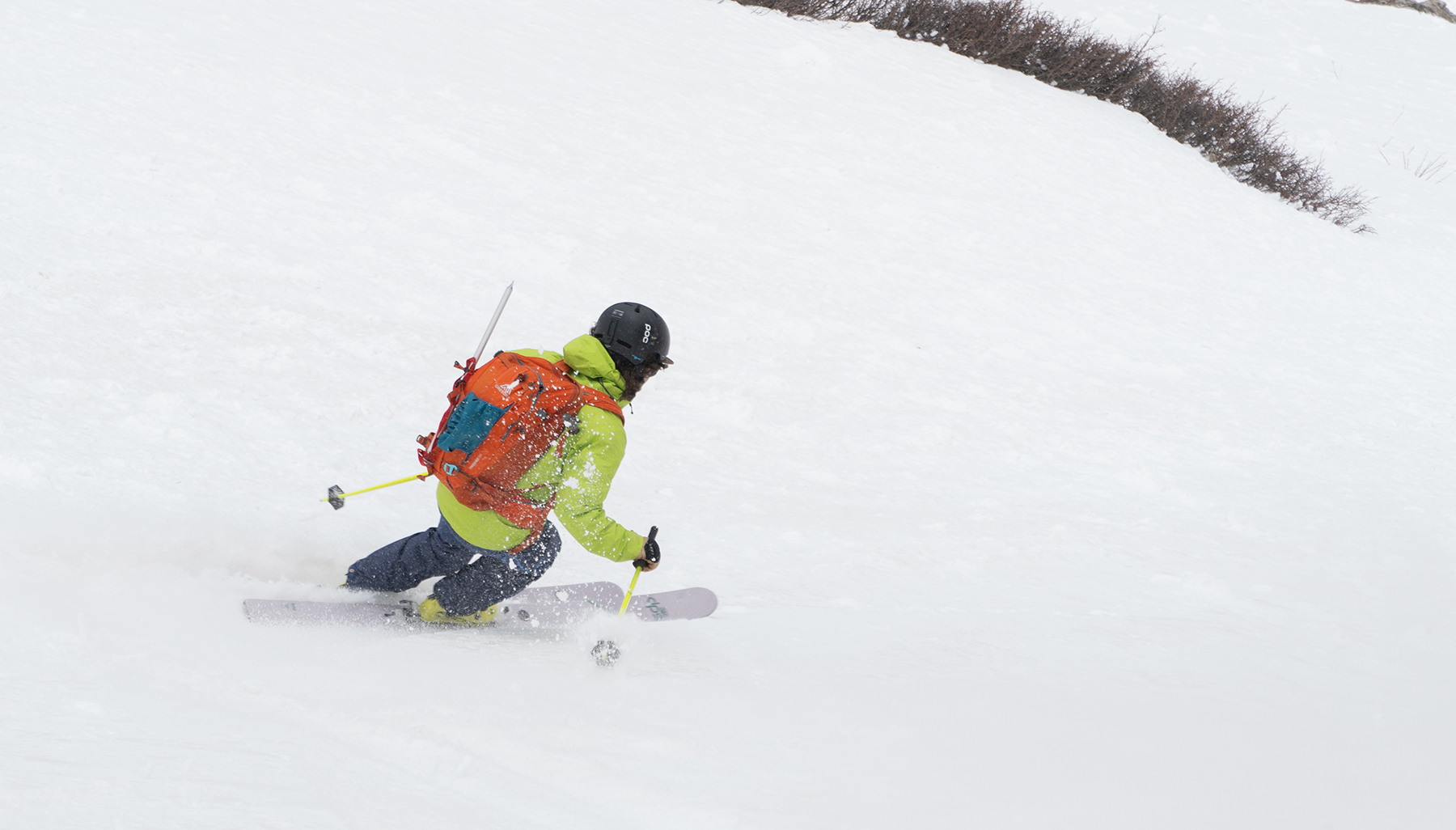
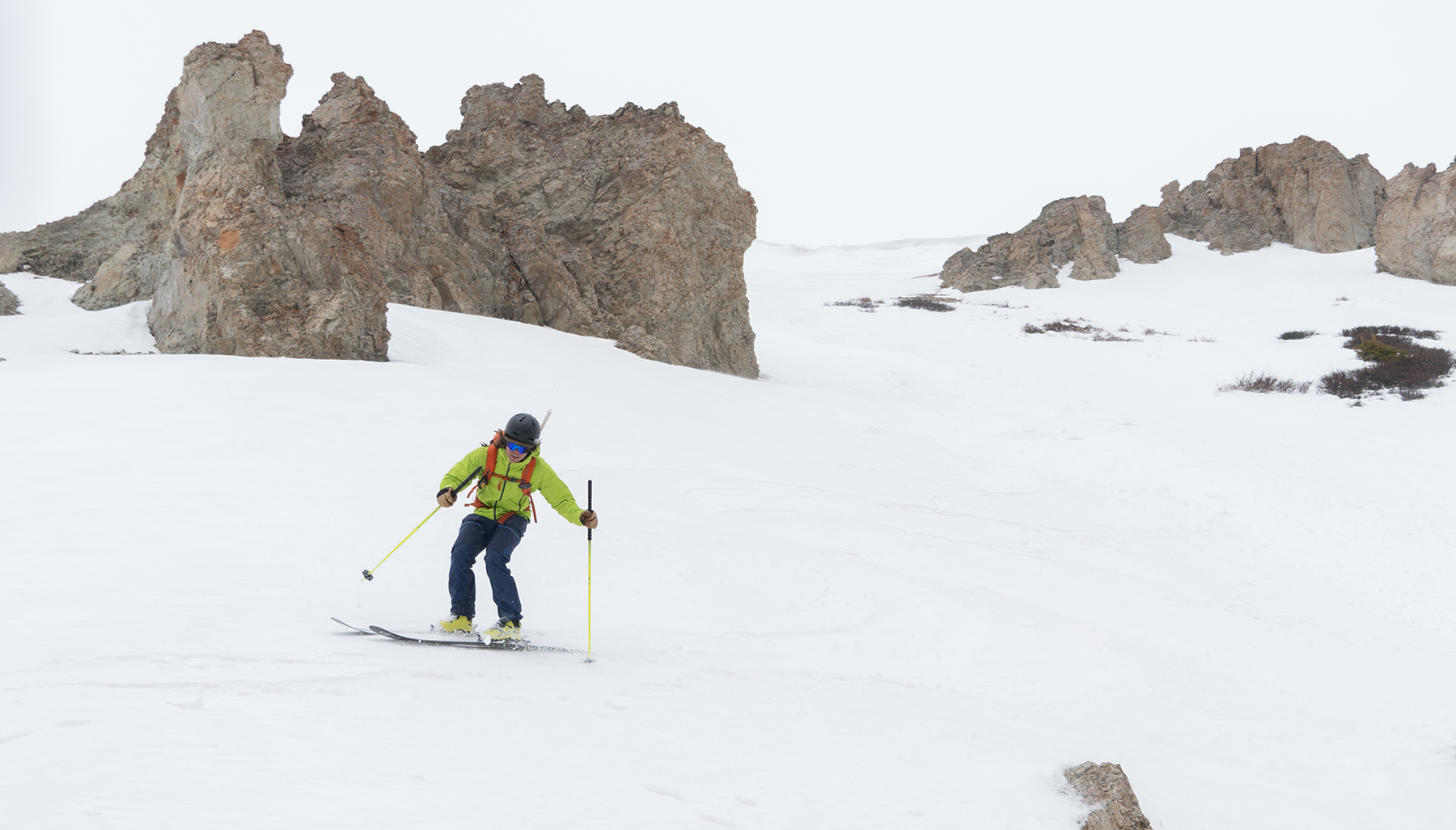
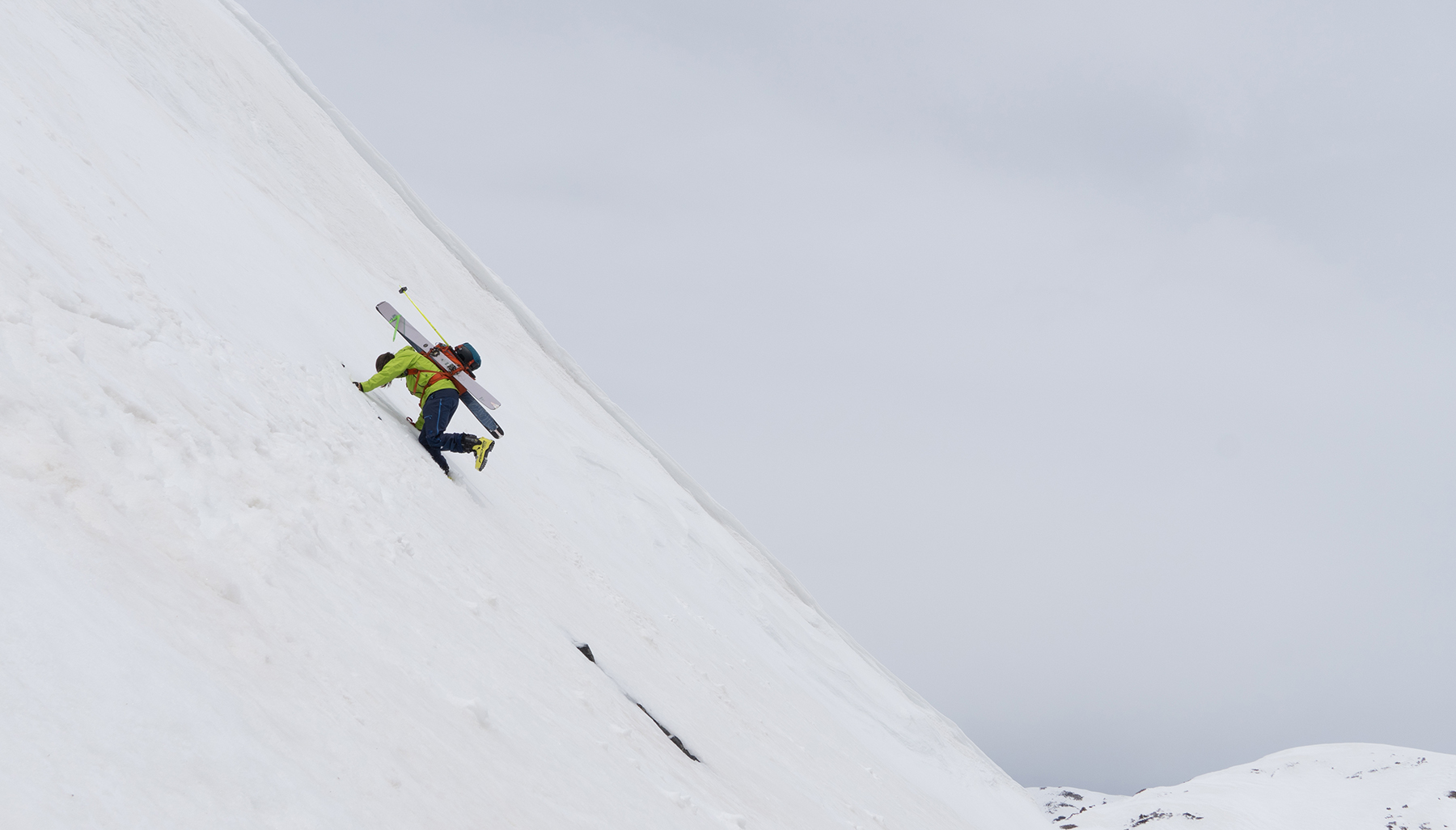
It’s just to bad that DPS prices are not easy going for the every day skier.
I know, there are lot’s of expensive things out there, I’m just bummed because DPS skis often seem like they would work for me style wise, but absolute not price wise…
Great review! Are you getting on the 106 C2 this season? Would be interesting to see how it compares to for instance the Blizzard Zero G 105
Good review although I think you were polite in the discussion of firm snow. This ski is absolutely horrible in firm conditions, there is no edge hold on ice and it gets tossed around by the smallest amount of crud. This ski is for the guy that has to much money and not enough time to ski who wants to drink tea with his pinky finger up in the air. Not someone who wants get out and charge hard. So if you want to impress your friends with who can spend the most money on the biggest piece of junk ever produced this is the ski for you, if you want to charge hard and be on a platform that can handle whatever the mtn throws at you look elsewhere.